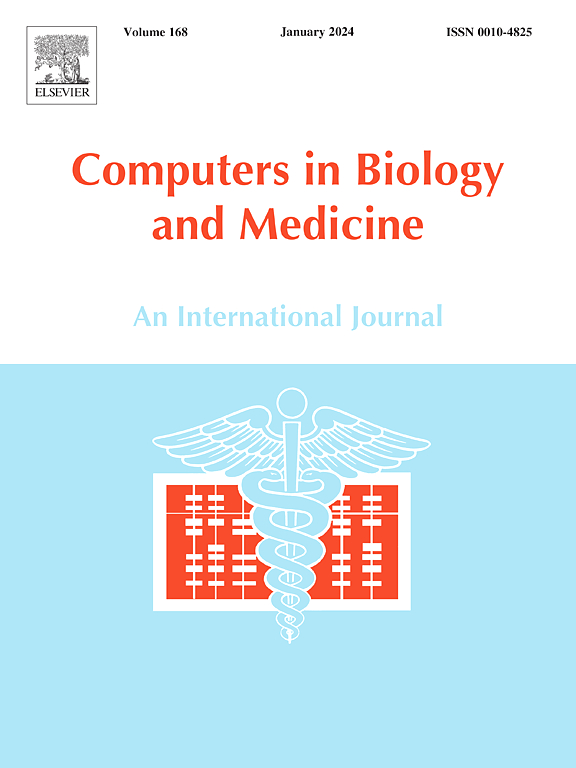单个大腿肌肉和股骨近端特征预测股骨颈骨折的移位:人工智能驱动的CT分析
IF 7
2区 医学
Q1 BIOLOGY
引用次数: 0
摘要
髋部骨折,特别是老年人髋部骨折,由于发病率和死亡率的增加,给公共卫生造成了重大负担。股骨颈骨折通常由低能跌倒引起,可导致严重的并发症,如无血管坏死,通常需要全髋关节置换术。本研究利用人工智能对整个大腿CT扫描进行自动肌肉分割,并使用StradView程序进行详细的皮质测量,从而增强肌肉骨骼评估。主要目的是提高对严重股骨颈骨折的预测和预防,最终支持更有效的康复和治疗策略。方法对60例股骨颈骨折患者进行全股CT扫描。人工智能驱动的个体肌肉分割模型(骰子得分为0.84)对大腿区域的27块肌肉进行分割,计算肌肉体积。使用StradView测量股骨近端骨参数,包括平均皮质厚度、内部密度和四个区域的FWHM。相关分析评估了肌肉特征、皮质参数和骨折移位之间的关系。机器学习模型(随机森林、支持向量机和多层感知机)使用这些变量预测位移。结果相关分析显示,股骨颈移位与股骨颈/股骨粗隆间小梁密度以及特定大腿肌肉(如阔筋膜张肌)的体积有显著相关性。使用大腿肌肉体积和股骨近端参数组合特征集的机器学习模型在预测位移方面表现最好,随机森林模型的F1得分为0.91,支持向量机模型的F1得分为0.93。结论阔筋膜张肌、股直肌和半膜肌体积的减少,加上股骨颈和股骨粗隆间小梁密度的降低,与骨折移位的增加显著相关。值得注意的是,我们的SVM模型——整合了肌肉和股骨的特征——取得了最高的预测性能。这些发现强调了肌肉力量和骨密度在康复计划中的重要性,并强调了人工智能驱动的预测模型在改善股骨颈骨折临床结果方面的潜力。本文章由计算机程序翻译,如有差异,请以英文原文为准。
Individual thigh muscle and proximal femoral features predict displacement in femoral neck Fractures: An AI-driven CT analysis
Introduction
Hip fractures, particularly among the elderly, impose a significant public health burden due to increased morbidity and mortality. Femoral neck fractures, commonly resulting from low-energy falls, can lead to severe complications such as avascular necrosis, and often necessitate total hip arthroplasty. This study harnesses AI to enhance musculoskeletal assessments by performing automatic muscle segmentation on whole thigh CT scans and detailed cortical measurements using the StradView program. The primary aim is to improve the prediction and prevention of severe femoral neck fractures, ultimately supporting more effective rehabilitation and treatment strategies.
Methods
This study measured anatomical features from whole thigh CT scans of 60 femoral neck fracture patients. An AI-driven individual muscle segmentation model (a dice score of 0.84) segmented 27 muscles in the thigh region, to calculate muscle volumes. Proximal femoral bone parameters were measured using StradView, including average cortical thickness, inner density and FWHM at four regions. Correlation analysis evaluated relationships between muscle features, cortical parameters, and fracture displacement. Machine learning models (Random Forest, SVM and Multi-layer Perceptron) predicted displacement using these variables.
Results
Correlation analysis showed significant associations between femoral neck displacement and trabecular density at the femoral neck/intertrochanter, as well as volumes of specific thigh muscles such as the Tensor fasciae latae. Machine learning models using a combined feature set of thigh muscle volumes and proximal femoral parameters performed best in predicting displacement, with the Random Forest model achieving an F1 score of 0.91 and SVM model 0.93.
Conclusion
Decreased volumes of the Tensor fasciae latae, Rectus femoris, and Semimembranosus muscles, coupled with reduced trabecular density at the femoral neck and intertrochanter, were significantly associated with increased fracture displacement. Notably, our SVM model—integrating both muscle and femoral features—achieved the highest predictive performance. These findings underscore the critical importance of muscle strength and bone density in rehabilitation planning and highlight the potential of AI-driven predictive models for improving clinical outcomes in femoral neck fractures.
求助全文
通过发布文献求助,成功后即可免费获取论文全文。
去求助
来源期刊

Computers in biology and medicine
工程技术-工程:生物医学
CiteScore
11.70
自引率
10.40%
发文量
1086
审稿时长
74 days
期刊介绍:
Computers in Biology and Medicine is an international forum for sharing groundbreaking advancements in the use of computers in bioscience and medicine. This journal serves as a medium for communicating essential research, instruction, ideas, and information regarding the rapidly evolving field of computer applications in these domains. By encouraging the exchange of knowledge, we aim to facilitate progress and innovation in the utilization of computers in biology and medicine.
 求助内容:
求助内容: 应助结果提醒方式:
应助结果提醒方式:


